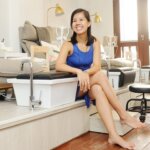We seem to be in one of those cultural periods where messages of paranoia are rampant. There is perhaps no more effective way to draw attention to oneself these days than to utter doom and gloom about your topic of interest. This trend (after all, isn’t the goal of any communicator to be able to say that his message “is now trending”?) has not bypassed the world of IP. Consider the following. There was a letter from a highly reputable conference organizer regarding an upcoming programme on 3D printing. The letter begins:
“$100 billion loss per year (emphasis in original). At least. That is the sum of global IP losses due to 3D printing predicted by IT research and advisory company Gartner for the near future.”
The letter then went on to promote the programme. My colleague came into my room, visibly distressed. “Can this really be?”, he asked. The sum mentioned in the letter simply staggered him, as well as myself, so I decided to do some research on the claims made in the letter. After all, Gartner is a leading company in its field.
After some investigation, what appears to be the source has be located. In an on-line press release issued on October 8, 2013, in connection with a Gartner-sponsored Symposium event taking place at the same time, it was stated:
“By 2018, 3D printing will result in the loss of at least $100 billion per year in intellectual property globally. Near term flag: At least one major western manufacturer will claim to have had intellectual property (IP) stolen for a mainstream product by thieves using 3D printers who will likely reside in those same markets rather than Asia by 2015 (emphasis in original).
The plummeting costs of 3D printers, scanners, and 3D modeling technology, combined with improving capabilities, makes the technology for IP theft more accessible to would-be criminals. Importantly, 3D printers do not have to produce a finished good to enable a finished good in order to enable IP theft. The ability to make a wax mold from a scanned object, for instance, can enable the thief to produce large quantities of items that exactly replicate the original.”
The question still is—just how serious is one supposed to take such “predictions”? I was not able to find any follow-up published by Gartner itself. With this in mind, and acknowledging that I do not have access to any underlying data, I am of the view that it is prudent to treat these conclusions with a healthy dose of skepticism. A few examples are instructive.
1. Take the issue of “loss”: whose loss, exactly, and it is gross or net? After all, there will be winners as well as losers in a 3D printing world. Thus it is presumed that developments in 3D hardware will continue apace, and that patent protection for these advancements will be sought. Surely this is a IP-positive benefit, although it poses a challenge in quantifying such benefits. And what about the developers of better and better materials, a key component in the degree to which 3D printing will make itself a widespread phenomenon? They too will presumably benefit from the fruits of the IP developments. Ditto the developers of the CAD files.
2. It that rate and scope of penetration of 3D printing as a nearly ubiquitous feature of modern life is still circumscribed. Speed of manufacture is still an issue, as is the quality of materials and the range of objects suitable for 3D printing continues to be debated. A 3D printing evangelist such as Professor Hod Lipson would argue that it is only matter of time, but that 3D printing will prevail. Perhaps, but until then, the extent to which 3D printing is still limited, so much so that one wonders whether Gartner’s prediction was based on projected uses of the technology that will not occur in the near and medium future.
3. Just how likely is it that 3D printing will foster a wide-spread criminal class running roughshod over IP rights? Counterfeiting needs not only ready means for carrying unauthorized copying and reproduction, but a business model that makes economic sense. It is not clear that 3D printing so easily meets both criteria.
4. That said, I recognise that the use of scanners to make 3D printing copies of the products of others is a problem that needs to be addressed. But it is only one of a number of challenges to protecting industrial secrecy and, just as in other circumstances, a combination of technological and managerial solutions may provide at least a partial solution.
A parting word—let’s take the Gartner prediction as portending an IP dystopia, where people prefer to make products the 3D-printing way, even it if runs roughshod over IP rights, and persons are prepared to create the necessary tools, machines, software and materials to facilitate this process. If the public no longer has an interest in brands, and it is not bothered by the provenance of the software that it uses in manufacture, perhaps the most that can be said is–so be it. IP does not derive from Mount Sinai; it is the creature of men and not the Divine.
____________
About the Author
This article was written by IPKat and duly edited. see more of IPKat’s work.





























